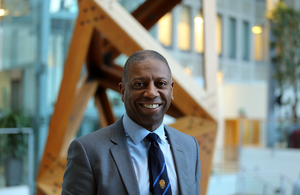What works in youth justice - ideas for now and the future
Keith Fraser, Chair of the YJB, summarises a report which brings together thoughts on achieving a Child First system from 200+ youth justice experts

Photo of Keith Fraser
For decades academics, policy makers, practitioners and other experts have deliberated on how best to create safer communities by preventing offending by children. For the past 20 years or more, the body of evidence known as the ‘Child First’ approach has been proven to be the best way of achieving this.
With that in mind, at the YJB we set out to answer two questions:
- How far do we think we are from achieving a “Child First” system?
- What could we do to achieve a “Child First” system?
To provide answers we brought together more than 200 stakeholders – all experts in their fields within or connected to youth justice. They came together in groups across England and Wales to provide their thoughts on the current system and ideas for the future.
Using a systems map methodology, with independent validation generously provided by Professor Kate Williams from University of South Wales, we looked at the themes which appeared in stakeholders’ answers.
The results were fascinating. Not just the themes suggesting where we could improve, but also the breadth of ideas for change. It’s difficult to distil the thousands of thoughts we collated into just a few key messages, so I encourage everyone to view the full presentation. But to give you a flavour, across both England and Wales experts consistently raised the need to do the following:
- recognise the youth justice system as part of a wider system and make changes beyond – like improving understanding of why children offend
- collect the right data and to share it with agencies effectively
- enable greater child and workforce participation and collaboration
- challenge current reforms to go further, including police and courts, and to reflect this in changes to inspection
- review training for youth justice staff, including supporting staff to deal with trauma, and in Wales to build on in-depth trauma informed training already delivered
From the above, it’s clear there’s lots to work on to finally achieve a system which fully utilises Child First evidence, but we didn’t just receive a ‘wish list’ from partners, they also came full of brilliant ideas – from quickly implementable, no-cost ideas to long-term ideas involving complex changes to law, policy or investment.
We recognise that with complex systems there is no quick and free panacea. At the YJB we’ve committed to continue bringing together experts and to provide spaces for collaboration and further discussion. We will also consider how we can act on ideas for change within our gift and support others to make changes that are within their power.
As youth justice experts we all agree that the success of the youth justice system is reliant on many organisations and individuals. That’s why I’m asking all of you who are directly and indirectly involved in youth justice to read the findings, share them with colleagues and to consider how you and your organisation can use this information to support your own work and contribute to the changes suggested.
I take great heart in the number of ideas for improvement. For me it shows that there are solutions, that there is great hope and that there are many of us that care deeply for the communities and children who are most affected by crime. Thank you to all of you who took part in discussions and offered your expertise, to those who have helped make sense of the evidence and to everyone who continues to work tirelessly to improve the lives of children and our communities.